Affiliate links on Android Authority may earn us a commission. Learn more.
The Amazfit Falcon flirts with premium watch territory
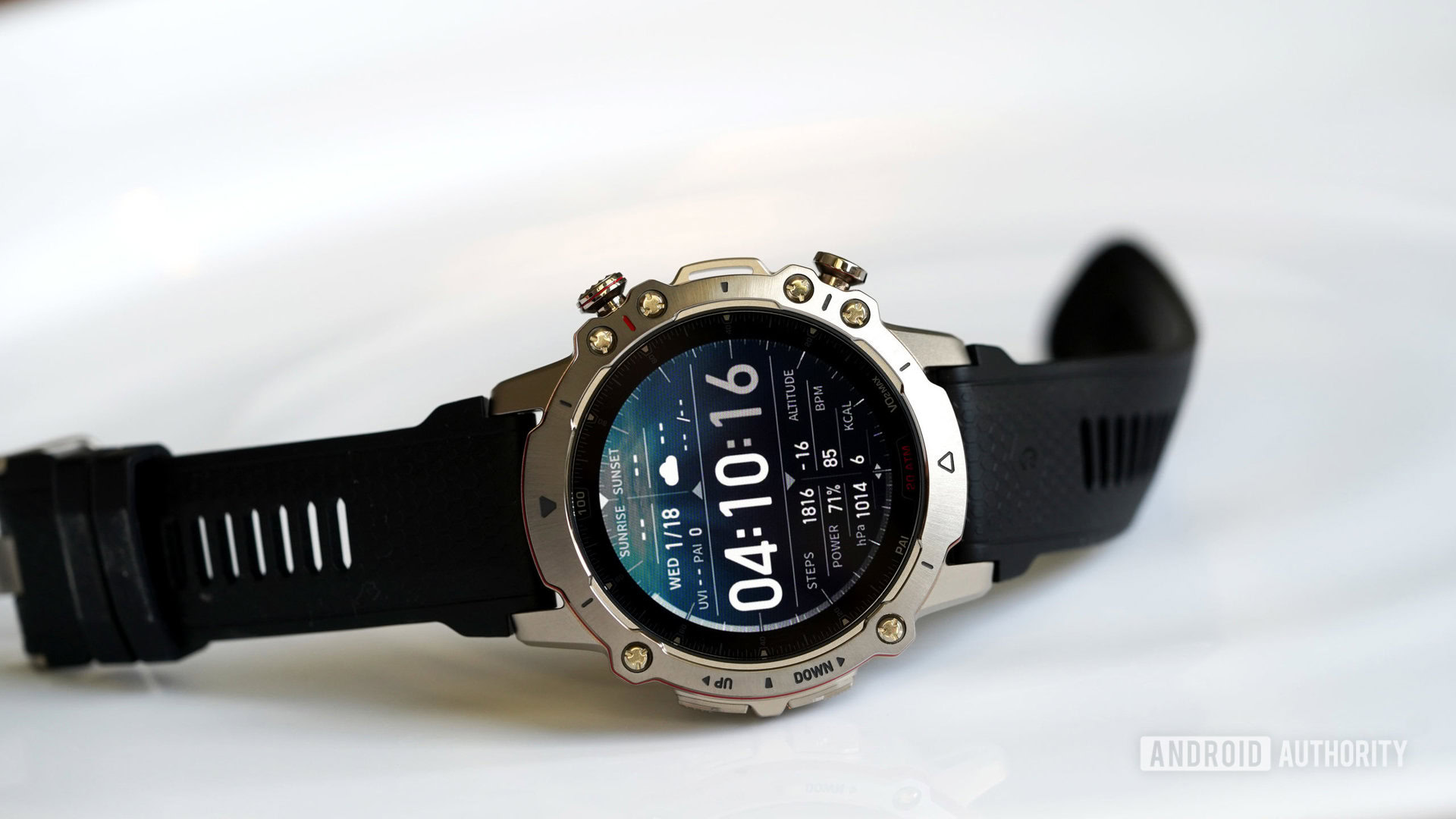
The Amazfit Falcon is a very attractive device. For an Amazfit wearable, it also comes at a relatively high price. Whether the watch piques your interest or not, one thing is clear: Amazfit is extending its reach in the smartwatch space.
The company quite literally sent the Amazfit T-rex into space, and the Falcon boasts even better specs. But while the premium tier may be a new market space for Amazfit, it’s certainly not uncharted territory. The Falcon’s highlights and features are very familiar and merely inch the brand toward competitors like Garmin.
Here’s looking at you kid
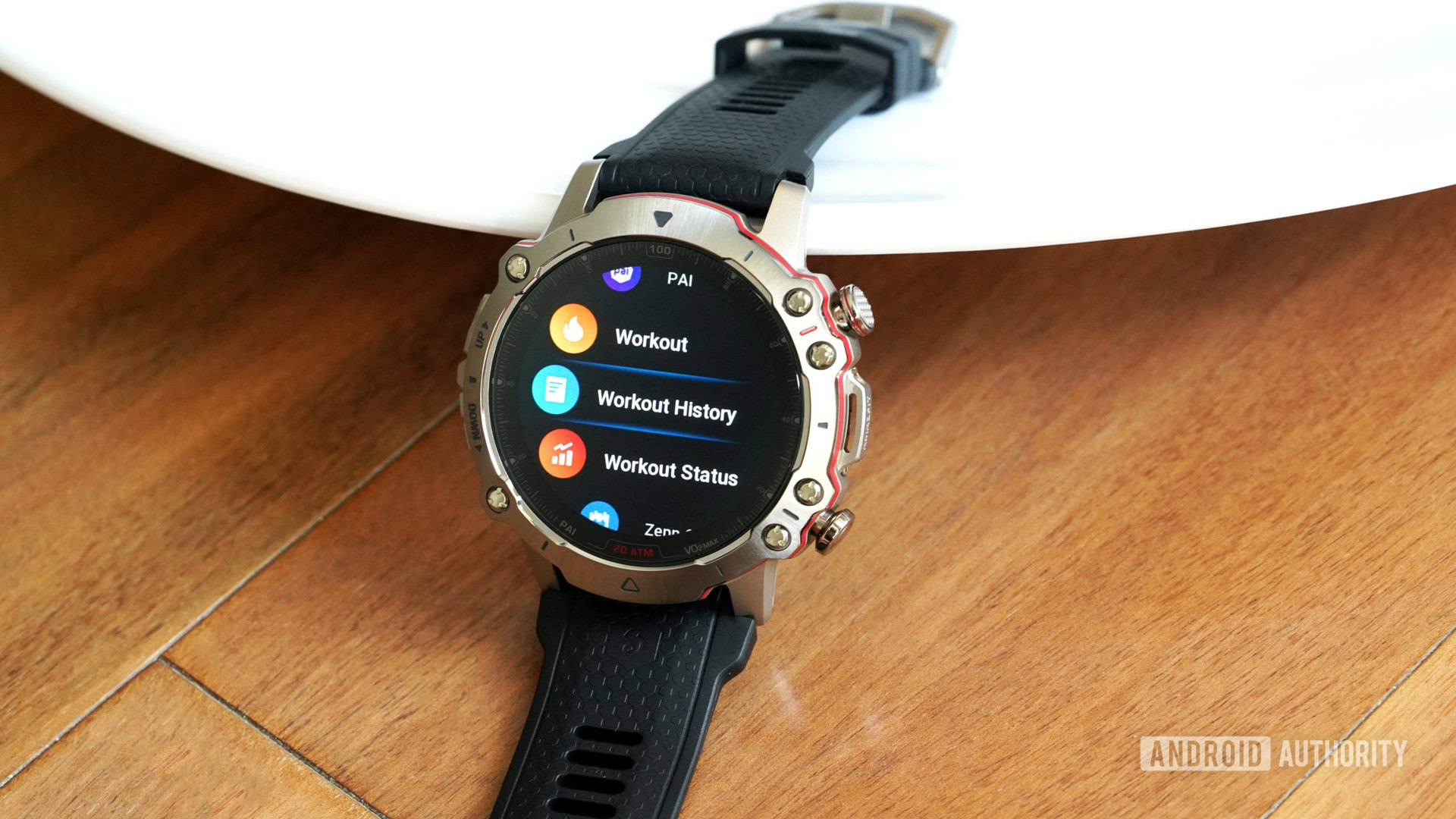
At face value, the Amazfit Falcon is a class act. The oversized watch features a raw aesthetic with a brushed, matte finish and six exposed screw heads surrounding the display. The premium build materials, including aircraft-grade titanium, make an immediate impression. Namely, that impression is that you probably have an important career like aerospace engineering (I do not). My only initial complaint is the prominent red stripe along the side of the watch case. This detail lends to the intensity of the device’s vibe, but honestly, I just don’t like the color red, so that’s on me.
On a more objective note, the watch is also only available in one style and one model size, which may not work for everyone. Its diameter measures 49mm landing it right between the Garmin Epix and the Garmin Fenix 7. Its weight is similar to the Apple Watch Ultra at 64g. In other words, this isn’t a small wearable. If you have an especially petite wrist it will probably be too large. As a purveyor of bulky wristwear, I found the watch comfortable enough throughout my review period, but it is certainly weighty. On runs especially, the heft is noticeable.
The Amazfit Falcon is a large, attractive smartwatch with premium build materials and a beautiful display.
Below the glass, the watch features a colorful, 1.28-inch always-on AMOLED display with a 416×416 pixel resolution and an ambient light sensor. Simply put, it’s very nice. Text and graphics are incredibly sharp throughout the user experience and I thoroughly enjoyed putzing around the UI, browsing watch faces, and scrolling menus. Some users have complained about the device’s large bezel cutting into the display’s real estate. Typically I would say “more screen more fun,” so sure, that’s an unfortunate design choice, but I never felt jilted or like space was lacking.
The screen itself is protected with sapphire glass, and the device features military-grade durability specs including IP68 dust-resistance and a water-resistance rating of 20ATM. In other words, the Amazfit Falcon features an elevated build quality on par with many big names in the multi-sport watch arena. Even the strap is comfortable and durable, with a ton of adjustment notches. It is also very stretchy which was never an issue, just an oddity. If anything it made getting the perfect fit even easier.
Digging (or tapping really) into the details
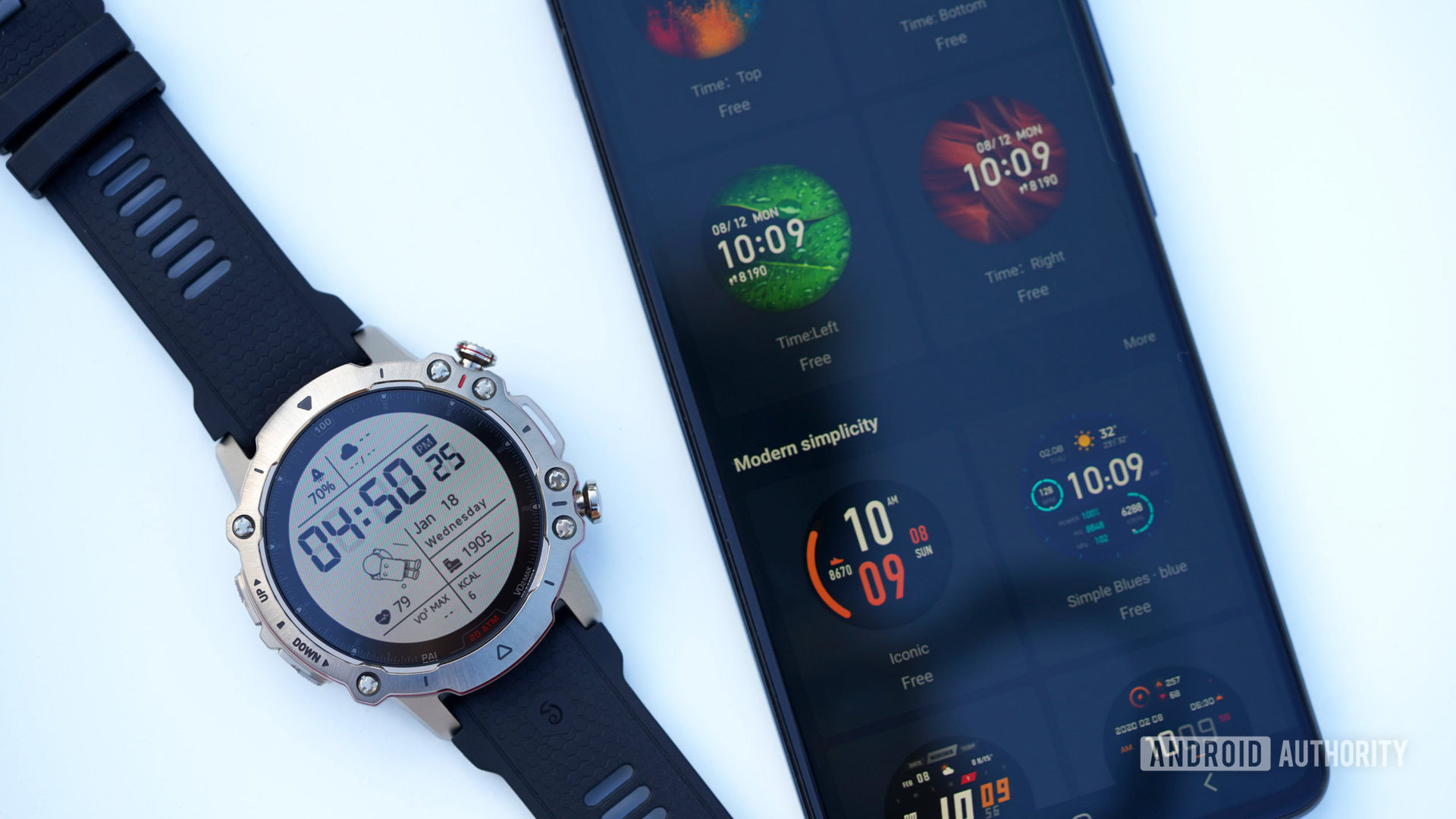
As mentioned, the Amazfit Falcon levels up the brand in terms of looks and build. I encountered zero display visibility issues, even in full sun. It’s fully touch-enabled so navigation can take place right on the screen, and I found it responsive throughout my testing. On the other hand, if you prefer buttons, the Falcon offers four of those as well so you can dip into menus even with sweaty fingers. If needed, you can even lock the touch screen to avoid accidental taps/swipes. However, I was surprised to find this also locks the buttons, making the feature… less useful.
Navigation is intuitive, or at least simple to memorize. Swipe down to access a customizable quick panel menu, and swipe up to access tile-like widget shortcuts. Swiping from the right will open your app drawer, while a swipe from the left accesses notifications. Likewise, the buttons offer basic up, down, back, and enter actions. Where possible, the Falcon is also comfortably customizable, from watch faces to menus, so you can tailor the details to your needs.
Navigating around the Amazon Falcon is intuitive with the option to use buttons or touchscreen interactions.
For me, this was critical. For starters, the watch faces preloaded on the Amazfit Falcon are a very specific style, which is very much not my own. With hundreds of options available in the Zepp app, I had no problem personalizing the look to a better fit. Naturally, I stuck with my initial interpretation of the device: that it belongs on the wrist of an intelligence-touting astronaut. My favorite watch face features an adorably dizzying spaceman seemingly drifting away endlessly.
Such dynamic options are battery-draining, however, so it’s worth picking a favorite static face as well to save juice. Luckily, the Falcon offers plenty of battery to spare with multi-week battery life. I was able to reach about seven days even with heavy usage and more than an hour of GPS tracking per day.
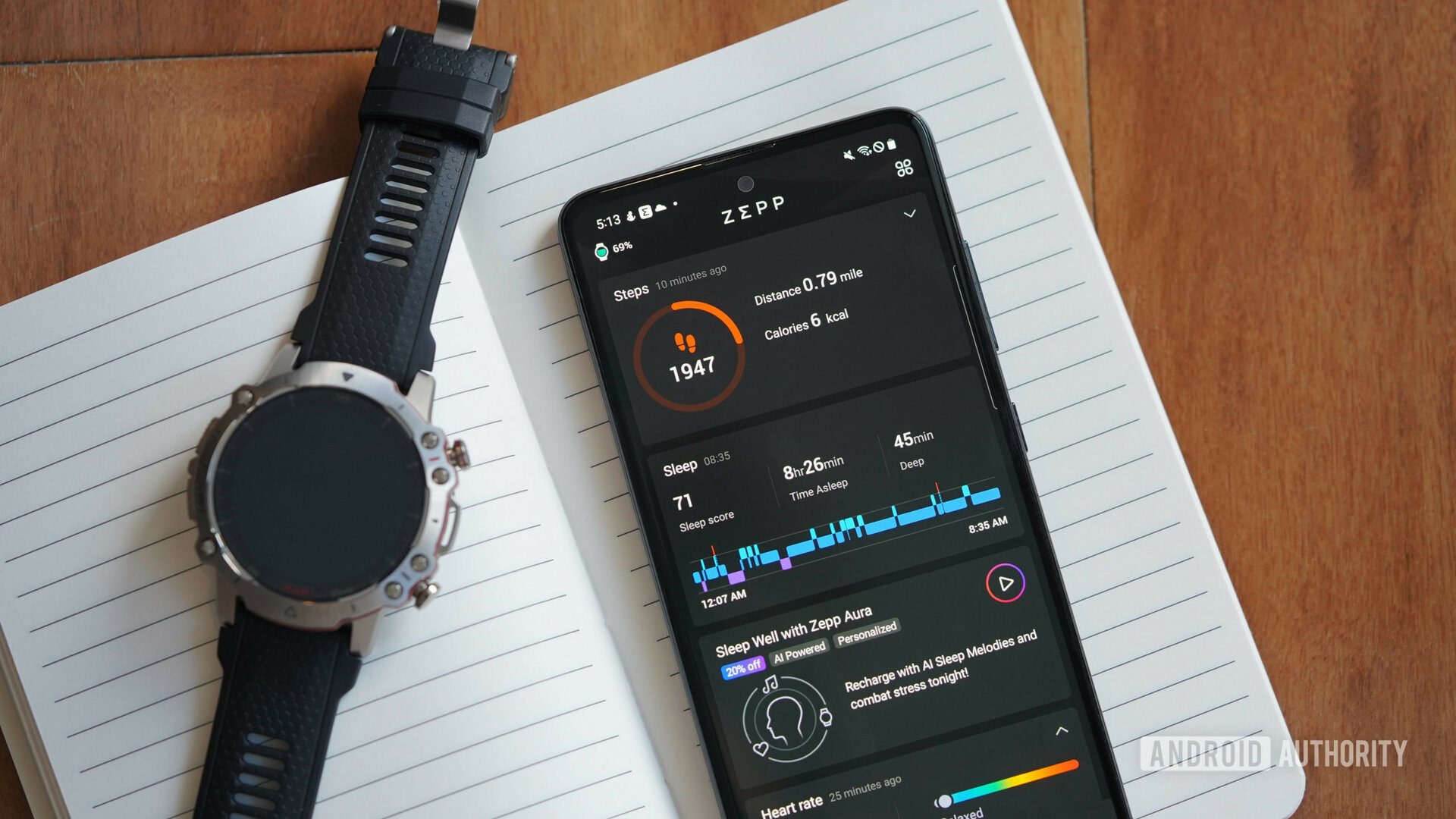
Unfortunately, while the Zepp app has plenty of watch faces to try, it only offers a handful of watch apps. If you’re after a truly smart smartwatch experience, you are much better off with a Wear OS watch like the Galaxy Watch 5 Pro, for example, or if you’re an Apple user, an Apple Watch. The Amazfit Falcon also doesn’t offer a built-in microphone or speaker. That means you won’t find phone call support or an assistant on board either. That said, the limited app list meant I had plenty of opportunity to test out what is available, and I have to say, I forgot how much I enjoy the old-school snake game. I also got weirdly addicted to the toothbrush timer, which probably says more about me than it does about this device.
Beyond the app store, the Zepp app offers everything you need in a very organized manner. As on the watch, menus are colorful, with detailed graphics and plenty of expandable data fields. I found the Homepage tab sufficient for at-a-glance stats and the All Data menu easy to scroll when looking for more information about a specific health or fitness field. You can also sync the Zepp app with a few popular third-party services like Strava or Google Fit.
Multi-sport and multitudes of sports
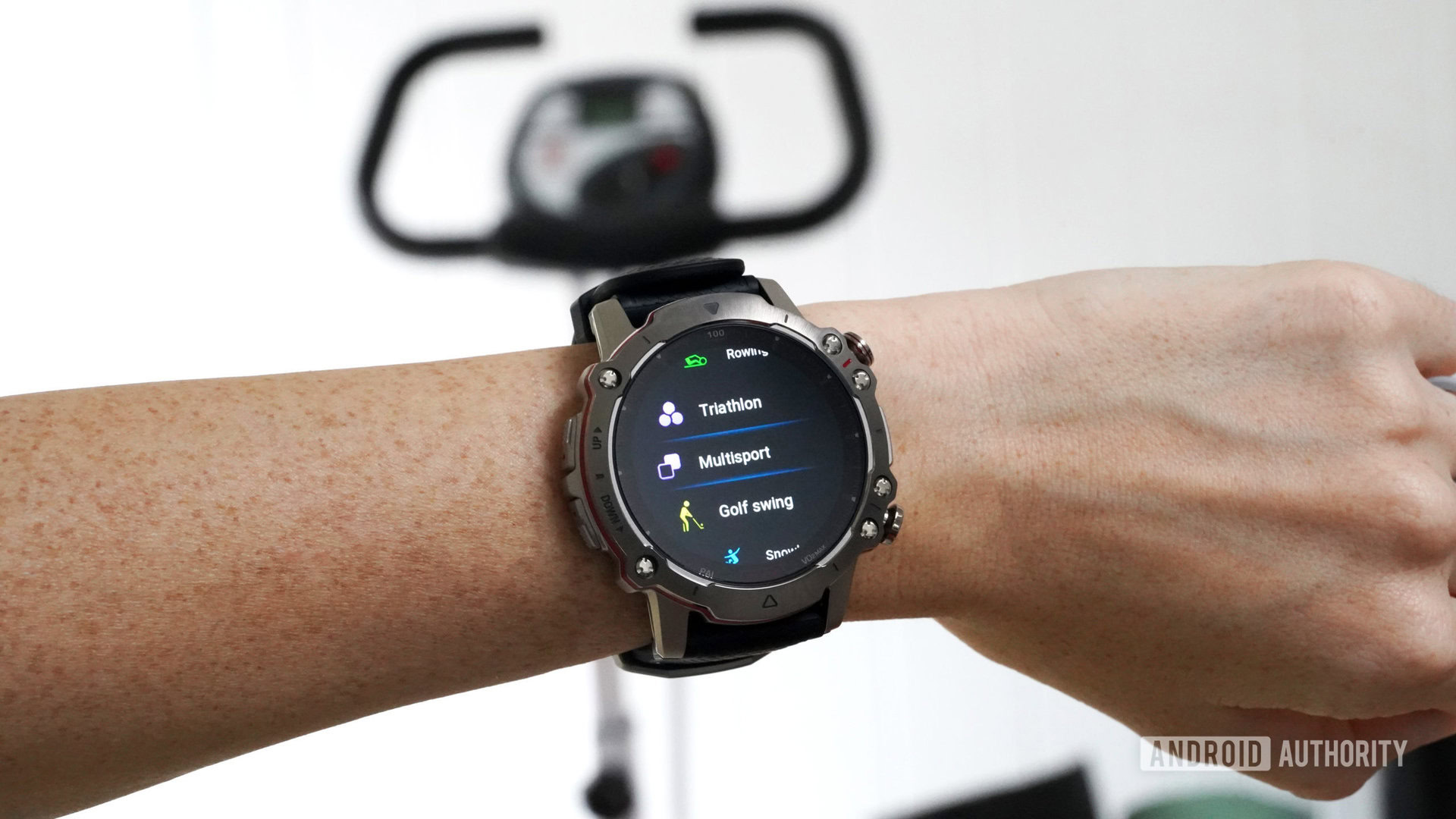
In terms of fitness watch basics, they’re all here. You’ll find plenty of onboard health and activity tracking including steps, stress, sleep, SpO2, heart rate, VO2 Max, and more than 150 sport modes. Perusing the complete list of exercises will simultaneously leave you reimagining your boring workout regimen (more beach soccer, less distance running) and wondering what really constitutes working out (foosball?). I genuinely had to look up a couple of the ultra-niche offerings.
The Falcon features more than 150 sport modes including everything from traditional workouts to activities you probably haven't heard of before.
Once you start a workout, you can customize data fields to display the specs you want onscreen. You can also set the always-on display to turn on only during activities. This helps streamline workouts while saving battery outside of exercise. I find always-on particularly useful for workouts with multiple sets like jump roping or HIIT. I find it less useful when I want to remain ignorant of how much running I have left to endure.
While on the subject of running, GPS on the device is commendable. The Amazfit Falcon offers multi-band GPS which is a great upgrade for the company. I took the watch on a few walks and runs alongside my Apple Watch Ultra and Garmin Fenix 7. The Falcon’s GPS data was very close to that of the competition. The device cut into lawns on a few turns but was generally spot on and the total distances were nearly identical. The GPS signal also locks on immediately when you start a workout, which is always a headache on more finicky wearables.
After a run, ride, or obscure game of Sepak Takraw, you can head back to the Zepp app to dig into tons of relevant workout stats. The Falcon records everything from pace and cadence to gradient distribution and training effect. I enjoy the thorough breakdown of digestible information, especially for so many different activities. You can also review routes for GPS-based workouts and save or upload runs you want to repeat. The Amazfit Falcon even offers onscreen breadcrumb trail navigation.
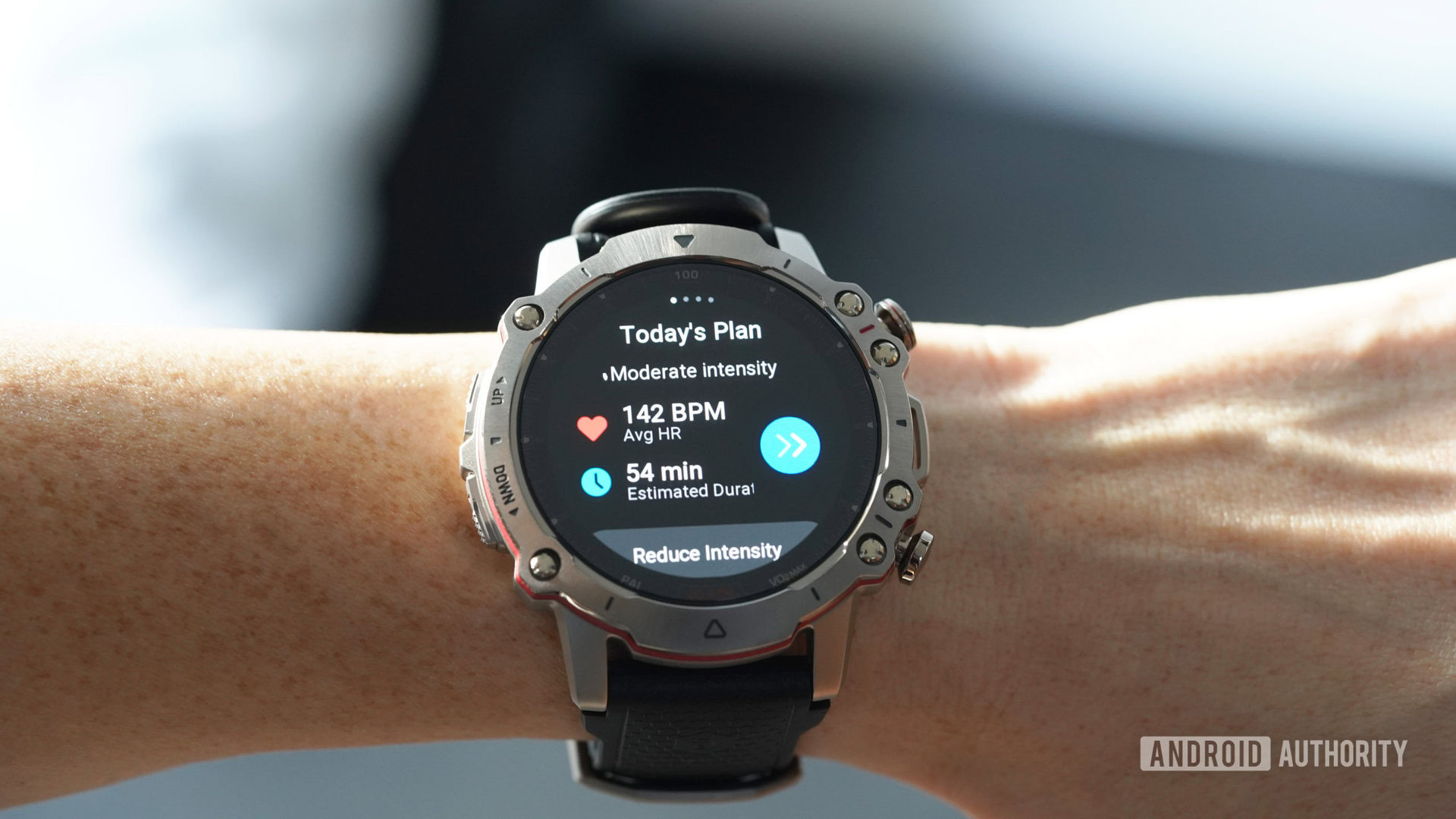
Another interesting new tool for athletes is the Zepp Coach feature. First off, it’s very clear that Amazfit focused on adding training tools to this device. Zepp Coach offers users guidance with tailored daily workout suggestions. Once you enter your goals in the Zepp app, the company’s AI determines a training schedule based on your activity level. As someone with a very loose workout regimen, I found Zepp Coach offered enough structure to be useful and motivational. For more dedicated athletes who already have a solid grasp of their training needs, it is likely not as useful. Still, it’s a nice addition to see on the device.
On the recovery front, sleep tracking on the Falcon lined up well with my trusted overnight wearables, including the Fitbit Versa 3. The watch tracks total time asleep as well as sleep stages and offers a comprehensive sleep score each morning. Despite its bulk, I found it perfectly comfortable overnight. I also appreciate the haptic alarm which can be adjusted to your preferred buzzer strength. I do suggest utilizing Theater mode overnight to make sure the screen doesn’t blast you in the face at 3 AM.
The heart of the matter
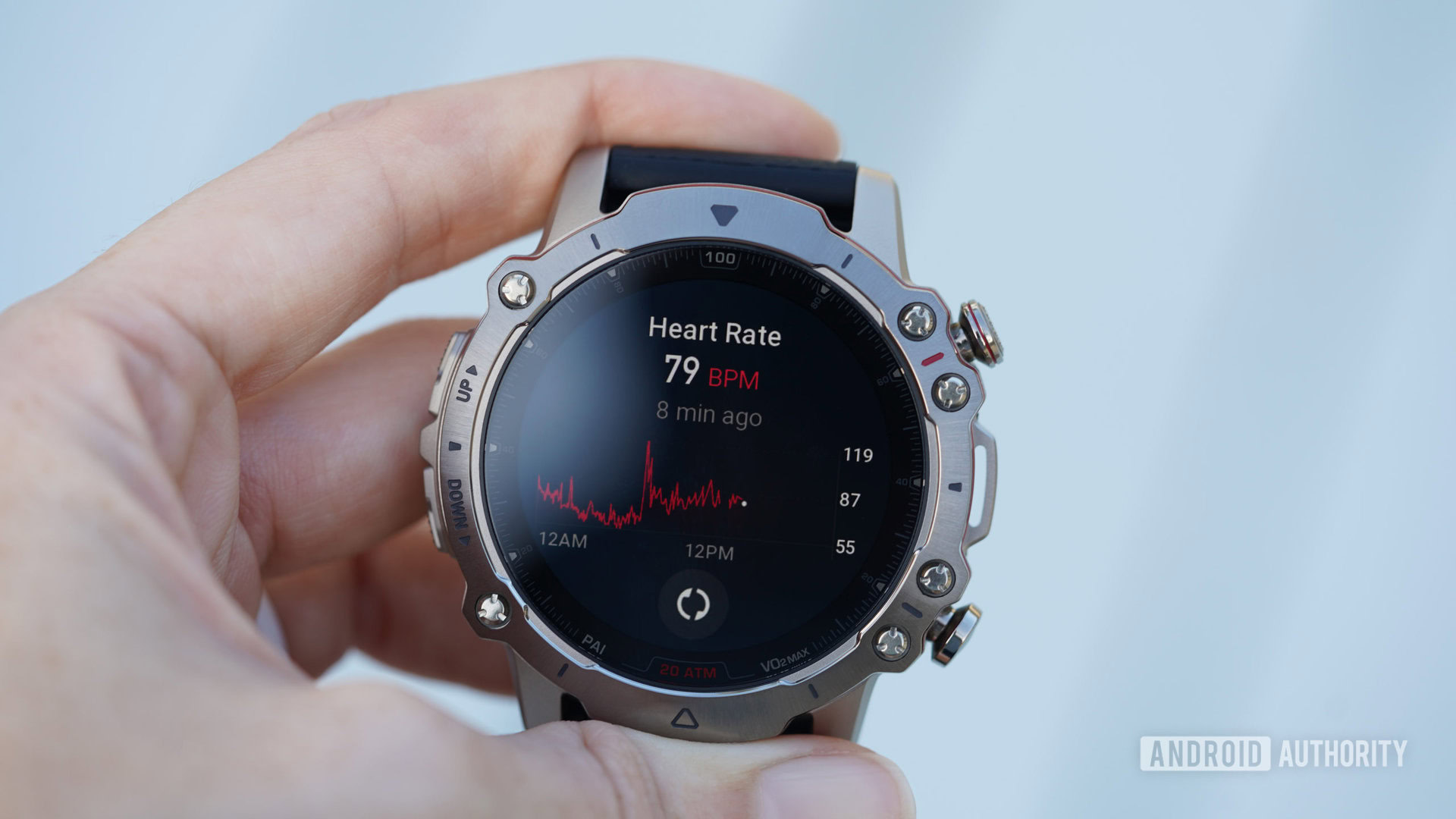
So where does the Amazfit Falcon fall short? Unfortunately, right at the heart. Active heart rate accuracy on the Amazfit Falcon is, in my opinion, the most unfortunate data set. At face value, the heart rate sensor is okay, and on a much cheaper product would probably be passable. However, once you enter the realm of competing with Garmin, Apple, or even Fitbit, the bar is higher.
Heart rate data wasn't as reliable as I would have hoped to see at this price.
At rest, the watch recorded pretty consistent data compared to my daily drivers. This made features such as stress monitoring and One-tap Measuring, both of which rely on heart rate data, largely reliable. However, I saw a few sporadic drop-offs on my runs with bpms lower than those of my chest strap. Thinking this might have something to do with the weight of the watch on my wrist, I tried adjusting the fit of the device between runs. Unfortunately, inconsistencies still appeared across each data set.
Likewise, SpO2 tracking isn’t as spot on as I would expect at this price point. Compared to a finger pulse oximeter, I measured 3-5 percentage points short on the Falcon. I don’t have respiration concerns but it’s still disconcerting to see inaccurate measurements on a device I plan to rely on for fitness guidance.
Amazfit Falcon review: Should you buy it?
Recreationally, the Amazfit Falcon is a very solid product. It’s attractive, packed with features, and offers great battery life. It falls short in small but noteworthy details such as third-party apps, voice assistants, and digital payment support. It misses the more significant mark in health sensor accuracy. Especially for high-level athletes, the heart rate data is too variable to be reliable.
The Amazfit Falcon is an attractive multi-sport device, but the company still has ground to make up if it wants to compete with big name brands.
The build quality and overall user experience are each a great showing from Amazfit. The performance is snappy and the display is beautiful. But at $499 in the US, the Amazfit Falcon price tag isn’t cheap. I can’t imagine spending that much for a multi-sport watch with unreliable heart rate data. Even if that isn’t a priority, the watch’s limited smartwatch features can’t compete with the likes of Apple or Samsung.
